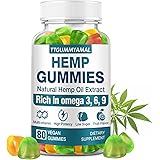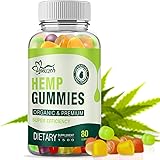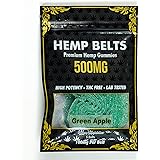In recent years, the discussion around therapeutic cannabinoids has surged, and among them, Cannabidiol (CBD) stands out as a focal point for scientific inquiry and public interest. Many individuals are exploring CBD for a myriad of wellness goals, ranging from mitigating chronic discomfort to fostering a sense of calm. As highlighted in the accompanying video, CBD’s presence in our health discourse is becoming increasingly prominent, driven by both anecdotal reports and a growing body of scientific evidence. Understanding the fundamental science behind this powerful phytocannabinoid is essential for anyone considering its potential health benefits.
Deconstructing CBD: A Phytocannabinoid Profile
CBD, or cannabidiol, originates from the Cannabis sativa plant, specifically cultivars known as hemp. Unlike its well-known counterpart, tetrahydrocannabinol (THC), CBD is entirely non-psychoactive, meaning it does not induce the “high” associated with recreational cannabis use. The cannabis plant family boasts a rich array of molecular compounds, known as phytocannabinoids, with over 80 distinct types identified to date. These compounds interact uniquely with the human body’s intricate physiological systems.
The distinction between hemp and marijuana is crucial for comprehending CBD’s legal and functional attributes. Marijuana strains are typically cultivated for their high THC content, catering primarily to recreational applications. Conversely, hemp varieties are selectively bred to contain negligible levels of THC, generally below 0.3% on a dry weight basis, while being rich in other beneficial cannabinoids like CBD and cannabigerol (CBG). Historically, hemp has been valued for its robust fibers, which have been utilized in diverse industrial applications, from manufacturing car components to constructing sustainable building materials such as hempcrete.
The Legal Landscape Shift for Hemp and CBD
A significant turning point for the CBD industry occurred in December 2018 when the federal government legalized hemp cultivation and its derivatives. This landmark legislative act, spurred by mounting scientific evidence regarding CBD’s therapeutic potential, effectively removed hemp from the Controlled Substances Act. This legalization has paved the way for extensive research and development within the burgeoning CBD market, fostering optimism about its widespread accessibility and acceptance in therapeutic contexts. Experts widely believe that this market will experience substantial growth, allowing more people to experience the profound effects of this plant on human physiology.
The Endocannabinoid System: CBD’s Biological Partner
At the heart of CBD’s efficacy lies its interaction with the human body’s sophisticated endocannabinoid system (ECS), a regulatory network discovered approximately three decades ago. This expansive system comprises a vast array of receptors distributed throughout the central nervous system, cardiovascular system, and various vital organs. Scientific consensus now positions the ECS as one of the most critical physiological systems, instrumental in maintaining homeostasis and regulating mood, pain sensation, appetite, and immune function.
The ECS functions through endogenous cannabinoids (endocannabinoids), which are naturally produced by the body and are remarkably similar in structure to the phytocannabinoids found in hemp. Our bodies are constantly confronted with external stressors and inflammatory agents, making the ECS’s role in maintaining internal balance critically important. Indeed, chronic inflammation is frequently identified as an underlying factor in a multitude of chronic diseases, underscoring the ECS’s protective role in overall health.
How CBD Modulates the Endocannabinoid System
Unlike THC, which directly binds to cannabinoid receptors (CB1 and CB2) within the ECS, CBD operates through a more indirect, yet equally potent, mechanism. Cannabidiol primarily functions by inhibiting the breakdown of the body’s naturally occurring endocannabinoids, such as anandamide and 2-arachidonoylglycerol (2-AG). By preventing the rapid enzymatic degradation of these vital signaling molecules, CBD effectively increases their availability and prolongs their therapeutic effects within the body. This modulatory action is analogous to how certain anti-anxiety medications function, enabling the body to optimize its existing internal systems rather than introducing an external blocker.
Unpacking the Therapeutic Attributes of CBD
The therapeutic attributes attributed to CBD are diverse and continue to be a subject of intensive research. Evidence suggests that CBD holds significant promise across several health domains, reflecting its widespread influence on physiological processes regulated by the ECS. The World Health Organization (WHO) has further reinforced CBD’s safety profile, stating that it exhibits no effects indicative of abuse or dependence potential, nor any evidence of public health-related problems when pure CBD is used.
-
Inflammation and Pain Management
The anti-inflammatory properties of CBD are particularly noteworthy, offering relief for various types of pain. When applied topically, CBD has been shown to effectively reduce localized inflammation and alleviate overall body pain. This mechanism is particularly beneficial given the pervasive role of inflammation in numerous chronic conditions, underscoring CBD’s potential as a non-addictive alternative for managing discomfort.
-
Anxiety Reduction and Mood Regulation
Anxiety is a prominent reason why many individuals turn to CBD, and its anxiolytic effects are rooted in specific neurochemical interactions. CBD possesses a remarkable ability to activate adenosine receptors, which play a crucial role in regulating neurotransmitter release and influencing feelings of relaxation. Conversely, caffeine, a well-known stimulant, acts as an adenosine blocker, preventing the natural sedative effects that adenosine typically produces. Therefore, CBD’s activation of adenosine receptors can be conceptualized as offering an opposing effect to caffeine, helping to induce calmness and mitigate feelings of anxiousness. The soothing sensation of calmness and happiness often reported by CBD users can be attributed to these direct and indirect modulations within the intricate endocannabinoid system.
-
Sleep Support and Nausea Control
Beyond its direct impact on anxiety and pain, CBD’s calming influence contributes to improved sleep quality for many users. Furthermore, early studies indicate CBD’s potential to aid in cancer treatment, not as a cure, but as a complementary therapy. It has demonstrated efficacy in reducing chemotherapy-induced nausea and managing pain, thereby significantly improving the quality of life for cancer patients. Recent preliminary research in Canada has also controversially suggested that CBD may offer protective and recovery benefits against COVID-19, though more rigorous investigation is certainly warranted.
Navigating the Evolving CBD Landscape: Quality and Research
Despite the promising scientific evidence and the widespread availability of CBD products, it is imperative to acknowledge that this research is relatively nascent, with ongoing studies continuing to uncover new insights. The rapid expansion of the CBD market following legalization has, in some instances, outpaced regulatory oversight. Consequently, numerous CBD products are released without stringent quality control measures, leading to significant inconsistencies in potency and overall product quality. This variability means that the actual cannabidiol content and purity can differ considerably from one brand to another, and even from batch to batch within the same brand.
Consumers must exercise due diligence when selecting CBD products. Some legally compliant CBD products, containing less than the 0.3% THC threshold, might still result in a positive drug test for marijuana, depending on the test’s sensitivity and the product’s full spectrum profile. Therefore, thorough research into reputable brands that provide third-party laboratory testing and transparent labeling is absolutely essential. These certifications ensure that the product contains the advertised amount of CBD and is free from harmful contaminants. The scientific community is also actively investigating optimal forms of CBD administration and precise dosage recommendations, highlighting the dynamic and continuously evolving nature of cannabidiol research and its practical applications.











